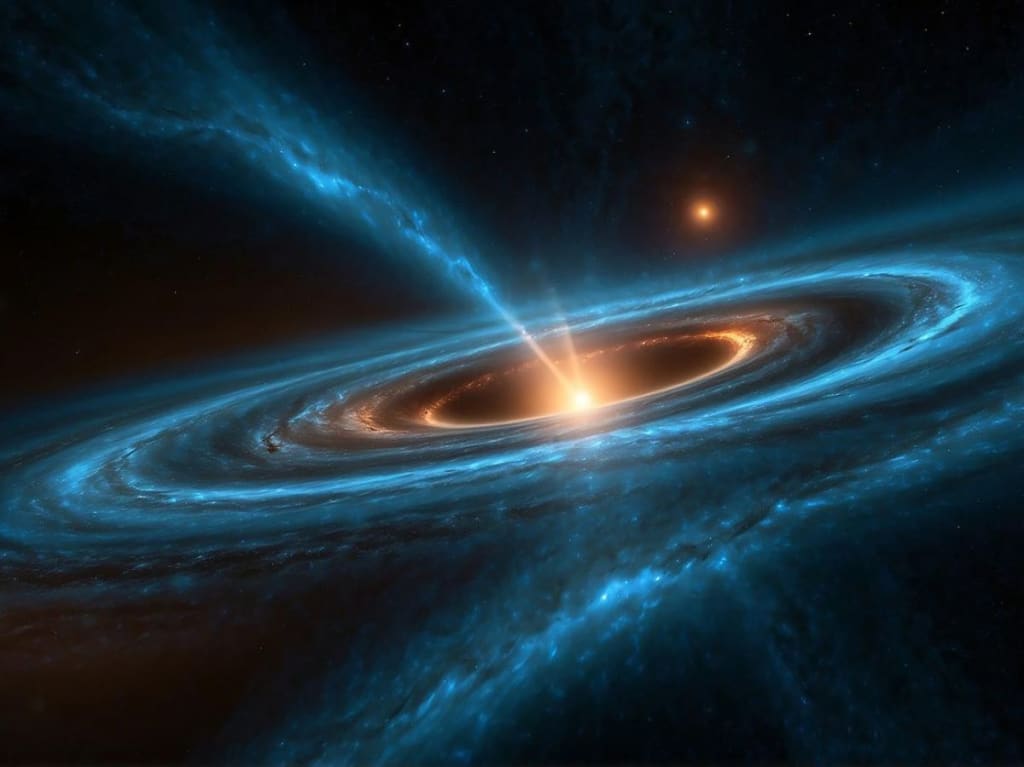Title: Unveiling the Cosmic Enigma: Exploring the Great Attractor and Our Galactic Journey
Title: Unraveling the Mystery of the Great Attractor: What Lies Beyond Our Galactic Neighborhood**

**Title: Unraveling the Mystery of the Great Attractor: What Lies Beyond Our Galactic Neighborhood**
In the 1970s, astronomers studying the Cosmic Microwave Background, the residual light from the universe's birth, made a startling discovery: our Milky Way galaxy and its vast cosmic entourage are hurtling through space at an astounding 390 kilometers per second. This revelation not only set a milestone in our understanding of galactic dynamics but also sparked a perplexing mystery about why our galaxy moves with such incredible speed.
A significant portion of our galaxy's velocity can be attributed to the expansive force of the universe itself, known as the Hubble flow. This phenomenon causes all cosmic objects to drift apart due to the universe's ongoing expansion. Additional gravitational interactions with neighboring galaxies like Andromeda also contribute to our galactic motion. However, even after accounting for these factors, there remained an unexplained deviation in our trajectory, suggesting an external force was at play.
Enter the Great Attractor—a mysterious gravitational anomaly pulling not just our Milky Way, but a staggering assemblage of around 100,000 galaxies spanning over 500 million light-years. Initially dubbed the "Great Attractor," this enigma posed a fundamental question: what could exert such a profound influence over such vast cosmic distances?
The only force capable of orchestrating the movement of entire galaxies across hundreds of millions of light-years is gravity, governed by mass. To nudge 100,000 galaxies, the Great Attractor must possess a mass so immense that it defies conventional comprehension—a gravitational behemoth unlike anything else known in the universe.
Early attempts to directly observe the Great Attractor faced immediate challenges. Situated within the "zone of avoidance," a swath of sky obscured by dense clouds of interstellar dust within our own Milky Way, traditional telescopes proved ineffective. For decades, astronomers were left to infer its presence indirectly, primarily through the gravitational effects it exerted on surrounding galaxies.
Approximately located between 150 and 250 million light-years away in the direction of the Norma constellation, the Great Attractor's sheer scale began to emerge. Estimates suggested it harbors mass equivalent to 10 quadrillion Suns, far surpassing any known celestial object in size and gravitational influence.
However, recent advancements in radio and infrared astronomy have offered fleeting glimpses into the obscured region, enabling scientists to peer deeper into this cosmic puzzle. These technological strides have illuminated the heart of the Laniakea Supercluster—a colossal structure encompassing not only the Great Attractor but also revealing the intricate web of galaxies in our cosmic neighborhood.
The Laniakea Supercluster spans a mind-boggling 520 million light-years and houses approximately 100,000 galaxies, positioning the Great Attractor at its gravitational center. Rather than a discrete entity, it emerges as the gravitational focal point within this vast superstructure—an anchor around which galaxies, including our own, are inexorably drawn.
The concept of the Great Attractor challenges our perception of cosmic order, illustrating the universe's intricate large-scale structure known as the cosmic web. This web isn't random but shaped by the gravitational tug-of-war between denser regions and cosmic voids since the universe's infancy. These gravitational dynamics have coalesced galaxies into clusters, superclusters, and beyond, weaving an elaborate tapestry across the cosmos.
Despite these insights, the ultimate fate of our journey towards the Great Attractor remains shrouded in cosmic uncertainty. While hurtling towards it at breakneck speeds—approximately 390 kilometers per second—we face an inevitable cosmic irony. The universe's accelerating expansion ensures that despite our trajectory, the distance to the Great Attractor will continue to grow over time.
This phenomenon mirrors two ants crawling towards each other on an inflating balloon: no matter their speed, the expanding space between them ensures they will never meet. Similarly, while the Milky Way advances towards the Great Attractor, the universe's expansion ensures we will perpetually fall short of reaching it, forever destined to recede from its gravitational grasp.
As we ponder the implications of this celestial ballet, a chilling realization emerges. The accelerating expansion of the universe will not only separate us from the Great Attractor but will eventually sever our view of distant galaxies beyond those gravitationally bound to us. In time, the grand cosmic web we observe today will fade into obscurity, leaving only our local group of galaxies visible in the vast, expanding darkness.
In conclusion, the Great Attractor stands as a testament to the universe's grandeur and mysteries, challenging our understanding of gravity, mass, and cosmic structure. While we may never physically reach its epicenter, the journey towards understanding it has illuminated the complex interplay of forces shaping our cosmic neighborhood and beyond.
As we continue to probe the depths of space, the enigma of the Great Attractor serves as a reminder of the boundless wonders awaiting discovery in the universe—wonders that defy our imagination and inspire us to unravel the secrets of our cosmic existence.
About the Creator
Enjoyed the story? Support the Creator.
Subscribe for free to receive all their stories in your feed.





Comments (2)
Super exploration mate.
excellent